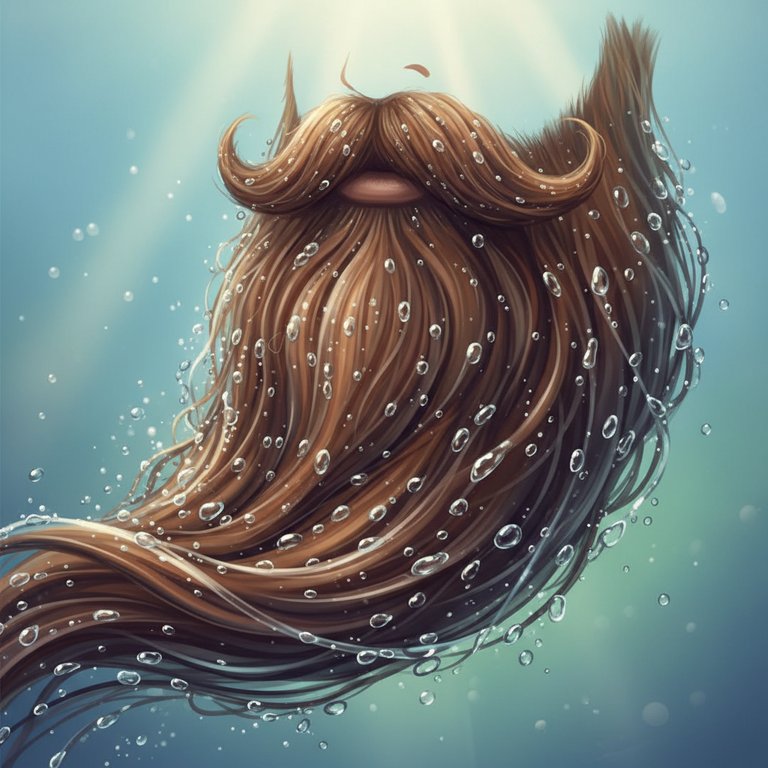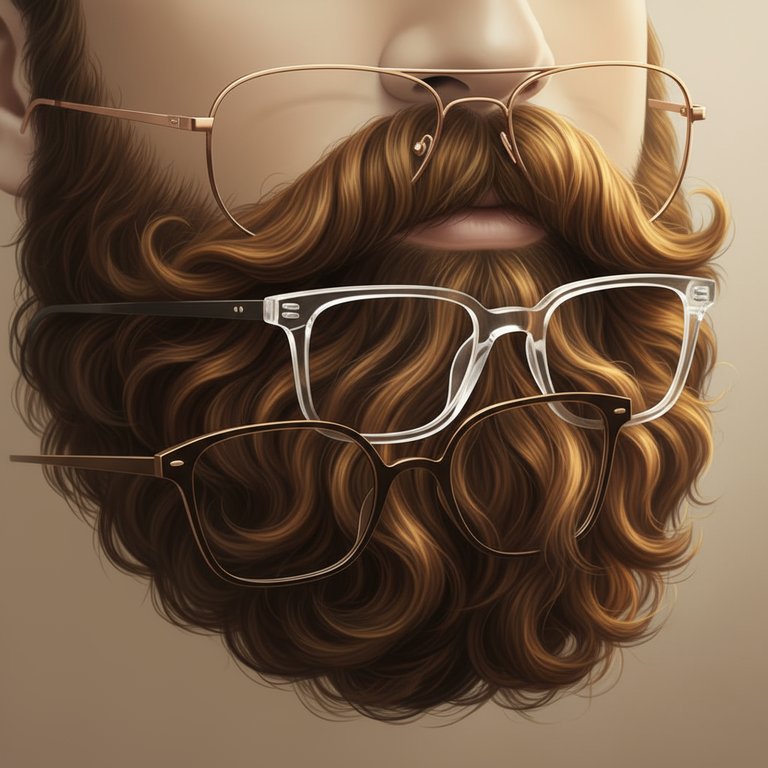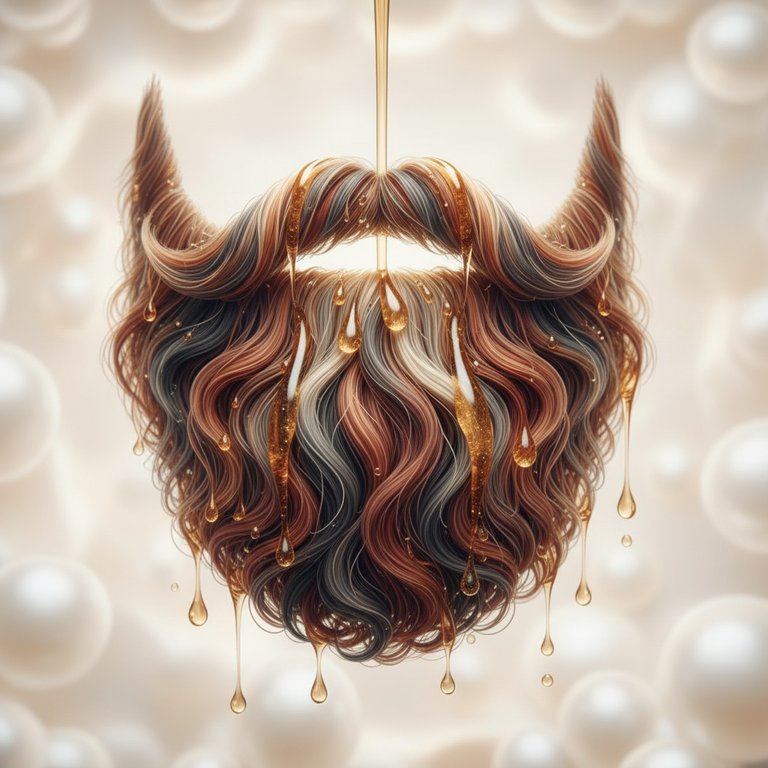Hey there, fellow beard enthusiasts! Ever stepped out of the shower, feeling fresh and clean, only to have your magnificent beard turn into a stiff, bristly wire brush? You’re not alone, my friend. It’s a super common struggle, and honestly, it can be pretty frustrating when you’re aiming for that soft, touchable mane. Instead, you end up with something that feels more like a brillo pad. What gives?
Well, don't fret! Today, we're diving deep into the mystery of the stiff beard after washing. We'll uncover the usual culprits behind this phenomenon and, more importantly, equip you with the knowledge and steps to banish that stiffness for good. Get ready to transform your beard from a prickly mess into a glorious, soft cloud!
The Usual Suspects: Why Your Beard Gets Stiff
So, why does your beard decide to stage a rebellion after a good wash? It often boils down to a few key factors. Think of your beard hair like the hair on your head, but with its own unique needs. When those needs aren't met, stiffness can creep in.
Harsh Cleansers are the Enemy
This is probably the biggest offender! If you're reaching for your regular shampoo, body soap, or even harsh bar soap to clean your beard, you might be doing more harm than good. These products are often packed with strong detergents and chemicals designed to strip oil and dirt from your scalp or body. While that might be okay for some hair types, for your beard, it’s like a desert wind, stripping away all its natural, protective oils. When these oils are gone, your beard hairs become dry, brittle, and yep, you guessed it – stiff.
Over-Washing: Too Much of a Good Thing
Just like with harsh cleansers, washing your beard too frequently can also lead to stiffness. Even if you're using a gentle beard wash, washing every single day can disrupt your beard's natural oil production. Your skin produces natural oils (sebum) that are essential for keeping your beard soft and moisturized. If you're washing them away daily, your skin and beard don't get a chance to replenish them, leading to dryness and stiffness.
Hard Water's Hidden Impact
This one might surprise you! If you live in an area with hard water (water with high mineral content like calcium and magnesium), these minerals can build up on your beard hair over time. This mineral residue can make your beard feel rough, dull, and stiff, even if you’re using good products. It’s like a tiny layer of grit coating each hair strand.
Lack of Post-Wash Moisture
Washing your beard, even with the gentlest beard wash, does remove some moisture. If you don't follow up with a good moisturizing routine, your beard will dry out and feel stiff. Think of it like washing your hands and not putting on lotion – they feel dry and tight, right? Your beard needs that same post-wash love to lock in moisture and keep it supple.
The Solution: A Step-by-Step Guide to a Softer Beard
Alright, now that we know why your beard is feeling stiff, let’s get into the good stuff: how to make it feel amazing. This isn’t rocket science, but consistency is key!
Step 1: Choose the Right Cleanser
- Ditch the regular shampoo: Seriously, throw it out of your beard routine!
- Invest in a dedicated beard wash: These are specifically formulated for facial hair and the sensitive skin underneath. They are gentler, pH-balanced, and designed to cleanse without stripping away essential natural oils. Look for one that's moisturizing and sulfate-free.
Step 2: Wash Smart, Not Hard
- Frequency matters: For most guys, washing your beard with a beard wash 2-3 times a week is plenty. On the days you don't wash, a quick rinse with lukewarm water is usually enough to clean without over-drying.
- Gentle technique: When you do wash, gently massage the beard wash into your beard and the skin beneath. Don't scrub vigorously. Rinse thoroughly with lukewarm water. Hot water can strip oils, and cold water doesn't clean as effectively.
Step 3: Towel Dry Gently
- Pat, don't rub: After washing, gently pat your beard dry with a clean towel. Avoid aggressive rubbing, which can cause frizz, damage the hair cuticles, and make it feel rougher.
- Leave it slightly damp: You want it to be about 80-90% dry. This slight dampness helps the next products absorb better.
Step 4: Replenish with Beard Oil
- Your beard's best friend: This is arguably the most crucial step for softness! Beard oil is designed to moisturize both your beard hair and the skin underneath. It helps to replace the natural oils that might have been lost during washing and creates a protective barrier.
- Application: Put a few drops (depending on beard length and thickness) into your palm, rub your hands together to warm the oil, and then massage it thoroughly into your beard, making sure to get down to the skin. Work it from the roots to the tips.
Step 5: Seal the Deal with Beard Balm (Optional but Recommended)
- Extra conditioning and hold: After applying beard oil, a good beard balm can provide an extra layer of conditioning and a light hold for styling. Balms often contain butters and waxes that lock in moisture and offer more protection.
- Application: Scrape a small amount of balm with your thumbnail, warm it between your palms until it melts, and then apply it evenly throughout your beard, shaping as desired.
Pro Tips and Tricks for Ultimate Beard Softness
Want to take your beard softness to the next level? Here are a few extra nuggets of wisdom:
- Consider a Beard Conditioner: Just like hair conditioner, a dedicated beard conditioner can add an extra boost of moisture and detangling power after your beard wash. Use it a couple of times a week.
- Brush or Comb Regularly: Using a good quality beard brush (boar bristle is fantastic) or a wide-tooth comb helps distribute the natural oils and any applied beard oil/balm evenly throughout your beard. This also helps detangle and train your beard, making it appear smoother and feel softer.
- Hydration from Within: Staying hydrated is good for your whole body, including the health of your hair. While it won't instantly soften a stiff beard, it contributes to overall hair vitality.
- Patience and Consistency: Rome wasn't built in a day, and neither is a perfectly soft beard. Stick to your new routine consistently, and you'll definitely see and feel the difference over time. Don't expect miracles after one wash!
Frequently Asked Questions About Beard Softness
Got more questions? I hear you! Here are some real questions people often ask about keeping their beards soft and happy.
Q1: "How often should I really wash my beard with beard wash?"
A: For most beard types and lifestyles, washing with a dedicated beard wash 2-3 times a week is ideal. If you work out a lot, are exposed to dirt, or have a very oily beard, you might go up to 3-4 times. On non-wash days, a simple rinse with lukewarm water is usually sufficient to remove surface grime without stripping essential oils.
Q2: "Can I just use regular hair conditioner on my beard instead of a beard conditioner?"
A: While it might seem convenient, it's generally not recommended. Regular hair conditioners are formulated for the hair on your head, which has different needs and is typically less prone to dryness than facial hair. Beard conditioners are specifically designed to be gentler and more moisturizing for your beard and the sensitive skin underneath, without clogging pores or causing irritation.
Q3: "My beard is still stiff even after using beard oil. What am I doing wrong?"
A: Don't give up! First, double-check your washing routine – are you using a harsh cleanser or washing too often? Ensure you’re applying enough beard oil for your beard's length and thickness, and massaging it all the way down to the skin. Consistency is key, so stick with the routine for a couple of weeks. Also, consider adding a beard balm after your oil for an extra layer of conditioning and moisture sealing.
Q4: "What's the main difference between beard oil and beard balm?"
A: Think of beard oil as a moisturizer for both your beard hair and the skin beneath. It's lighter, absorbs quickly, and focuses on nourishment and hydration. Beard balm, on the other hand, is a thicker, waxier product that provides deeper conditioning, helps to lock in moisture, and offers a light to medium hold for styling and shaping your beard. Many guys use both: oil first, then balm.
Q5: "How long does it take to notice a difference in beard softness once I start a new routine?"
A: You might start to feel a subtle difference after just a few days of switching to a proper beard wash and using beard oil consistently. For a significant improvement in softness and manageability, give it at least 2-4 weeks. Your beard needs time to recover and adapt to the new, gentler routine.
Q6: "Should I wash my beard with cold water, hot water, or lukewarm water?"
A: Lukewarm water is your best bet! Hot water can strip away natural oils, leaving your beard dry and stiff. Cold water, while good for closing hair cuticles, doesn't effectively cleanse or allow products to penetrate as well. Lukewarm water helps to open the hair shaft just enough for cleansing, without being too harsh.
Q7: "Is there a specific way to apply beard oil for maximum softness?"
A: Absolutely! Start with a few drops in your palm, rub your hands together to warm the oil, then begin by massaging it into the skin underneath your beard. This is crucial for healthy growth and preventing dryness. Once the skin is covered, work the remaining oil through the rest of your beard, from roots to tips. Finish by combing or brushing it through to ensure even distribution.
Conclusion
Say goodbye to that stiff, scratchy beard! By understanding why your beard gets stiff after washing and implementing a few simple changes to your grooming routine, you can achieve the soft, magnificent beard you’ve always wanted. Remember, it’s all about using the right products, washing smart, and consistently nourishing your facial hair. Give these tips a try, and get ready to enjoy a beard that’s not just clean, but incredibly soft and touchable!
Disclaimer: This content is for informational and grooming purposes only and should not be taken as medical advice. Always focus on products and routines that work best for your unique beard and skin.



